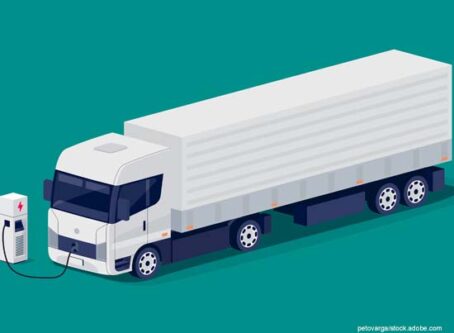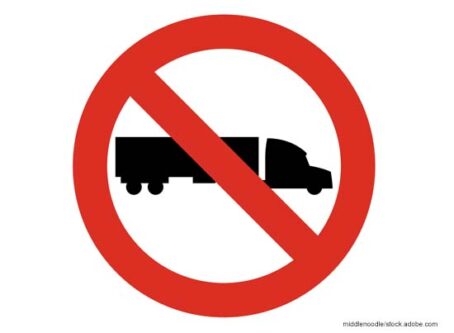Autonomous vehicle stakeholders seek clarity from federal, state governments
A new report highlighting the state of the autonomous vehicle industry reveals that although autonomous vehicles are logging more miles, government policies continue to slow progress.
In its inaugural State of AV report, the Autonomous Vehicle Industry Association gives a glimpse of how things are going in the world of autonomous vehicles. It reports things are going well for the most part but could be better with clearer policies at the state and federal levels.
“It is awe-inspiring to see the progress autonomous vehicles are making in the United States,” Autonomous Vehicle Industry Association CEO Jeff Farrah states in the report. “What was once science fiction is now a reality on our roads and in our communities. From trucks to robotaxis to zero-occupancy delivery vehicles, AVs are changing the way we move people and goods.”
Autonomous vehicles logging more miles
Despite some setbacks, miles traveled by autonomous vehicles have increased significantly in just the past nine months.
According to the report, autonomous vehicles have driven nearly 70 million miles on public roads in the United States. That is a 59% increase since the association last reported miles driven last July.
Although 70 million miles seems like a lot, it is relatively low compared to the total miles driven in the United States across all vehicle types. Last year, motorists traveled more than 3 trillion miles, according to the Federal Highway Administration. Miles traveled by autonomous vehicles make up 0.002% of total vehicles miles traveled in the U.S.
The report does not mention the crash rate per vehicle miles traveled. Numbers on autonomous vehicle crash rates are mixed. One report puts the number at 9.1 “self-driving car” crashes per 1 million miles driven, while the rate for traditional vehicles is 4.1 crashes per 1 million miles. On the other hand, Waymo published a report showing that after logging more than 7 million miles, its driverless vehicles were 6.8 times less likely to be involved in a crash resulting in an injury compared to traditional vehicles.
Government policies
A lack of policies at the federal level and a patchwork of state laws appear to be major challenges autonomous vehicle companies face.
When asked what would be the single most impactful item policymakers could do to support deployment and innovation, more than 36% of CEOs of autonomous vehicle companies indicated federal agencies need to enact rules of the road. More than a quarter said states need to provide clear laws and regulations regarding autonomous vehicle deployment. Only 18% suggested federal legislation encouraging deployment should be passed.
Deployment of autonomous vehicles is currently left to states. However, federal regulations that require certain safety standards for vehicles apply to self-driving vehicles, as well. Aurora CEO Chris Urmson is asking the Federal Motor Carrier Safety Administration for a warning device exemption that would allow autonomous trucks to use flashing lights to indicate when they are stopped on the side of the road. Aurora is set to deploy fully driverless trucks in Texas later this year.
Currently, there are no federal regulations specific to autonomous vehicles. And consequently, stakeholders are faced with adhering to a patchwork of state regulations. Companies are calling for a more unified, federal policy framework.
“As is the case with any emerging technology, new frameworks and guidelines are needed to ensure the safe and responsible deployment of autonomous trucks on our roads,” Waabi CEO Raquel Urtasun said. “These rules need to be flexible, allowing for experimentation and innovation, while also setting a strong floor for safety.”
Meanwhile, autonomous vehicle stakeholders have heavily influenced state policies. According to the report, eight states attempted to pass legislation requiring a human observer in autonomous vehicles last year. All eight of those efforts failed.
More than 20 states allow the deployment of autonomous vehicles, none of which require an operator in the vehicle for Level 4 or 5 vehicles.
About a dozen states allow for testing only. However, half of those states require a human in the vehicle. A few states allow the deployment of commercial motor vehicles only. The remaining states have no laws in the books addressing autonomous vehicles.
Several states currently are considering bills that address autonomous trucks. California and New York are considering legislation that would place more restrictions on them. Meanwhile, Kentucky and South Dakota are looking to loosen rules for autonomous trucks.
The Autonomous Vehicle Industry Association names the following states the top ones for autonomous vehicle expansion:
- Alabama
- Arizona
- California
- Florida
- Georgia
- Illinois
- Louisiana
- Mississippi
- New Mexico
- New York
- South Carolina
- Texas
Of those states, Arizona, Texas and Florida are considered states with the best regulatory environments for autonomous vehicles. LL









